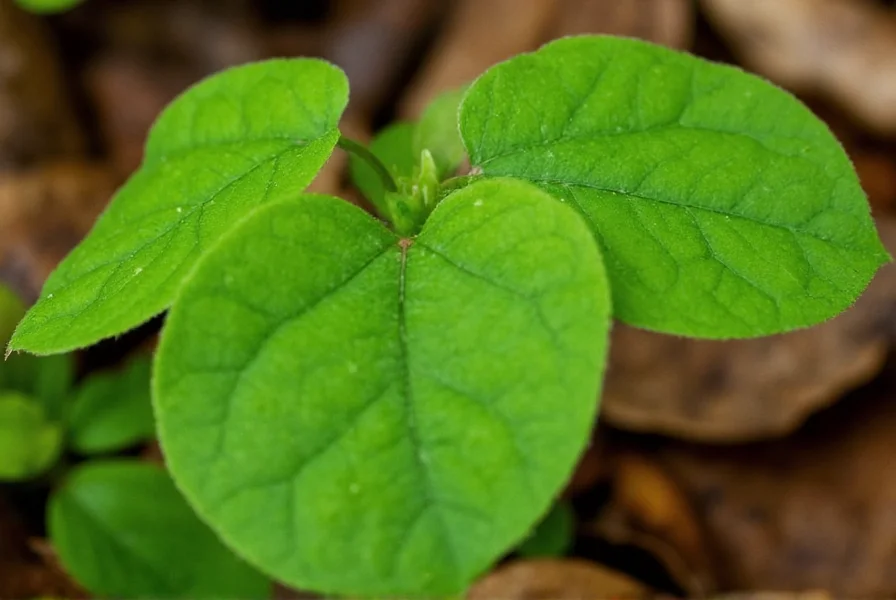For nature enthusiasts exploring central Ohio's native flora, discovering wild ginger in Hilliard offers a rewarding botanical experience. This low-growing perennial plant, scientifically known as Asarum canadense, forms dense ground cover in suitable habitats with its heart-shaped leaves and unique underground rhizomes that emit a spicy aroma when crushed—hence the "ginger" in its common name.
Understanding Wild Ginger's Natural Habitat in Central Ohio
Wild ginger thrives in the deciduous forest ecosystems that characterize much of central Ohio, including the Hilliard area. The plant prefers partial to full shade with consistently moist, well-drained soil rich in organic matter. In Hilliard and surrounding Franklin County, you'll typically find wild ginger flourishing along the shaded banks of Big Darby Creek and its tributaries, where the conditions perfectly match its ecological requirements.
The plant's growth pattern makes it an excellent indicator of healthy woodland ecosystems. Its dense mat-forming habit helps prevent soil erosion while providing ground cover for other native species. When exploring wild ginger locations near Hilliard OH, look for areas with mature canopy trees like oaks, maples, and hickories that create the dappled light conditions wild ginger prefers.

Best Locations to Find Wild Ginger in Hilliard
Several conservation areas within and surrounding Hilliard provide ideal conditions for wild ginger. The most reliable spots include:
- Sharon Woods Metro Park - Particularly along the creek-side trails in the northern sections
- Heritage Trail Park - Wooded areas near the Big Darby tributaries
- Three Creeks Conservation Area - Especially in the more mature forest sections away from the main trails
- Walter Brown Nature Preserve - Undisturbed woodland areas with rich soil composition
When searching for wild ginger in Hilliard conservation areas, remember that this plant typically emerges in early spring, with foliage appearing in March and the distinctive maroon flowers blooming from April through May. The plant reaches its full leafy coverage by early summer, though the flowers have usually faded by this time.
Identifying Wild Ginger: Key Characteristics
Proper identification is crucial when exploring native plants. Wild ginger features several distinctive characteristics:
| Feature | Description |
|---|---|
| Leaves | Heart-shaped, 3-6 inches wide, deep green with velvety texture |
| Flowers | Maroon, bell-shaped, hidden beneath leaves, bloom April-May |
| Height | 4-8 inches tall |
| Stem | Short, hairy stems connecting leaves to rhizomes |
| Rhizome | Underground stem with spicy, ginger-like aroma when crushed |
Be careful not to confuse wild ginger with the potentially toxic Aristolochia serpentaria (Virginia snakeroot), which has similar habitat preferences but different leaf shape and flower structure. When identifying wild ginger species in Ohio woodlands, remember that true wild ginger has two leaves per stem and the distinctive spicy scent when the rhizome is gently scratched.
Conservation Considerations for Wild Ginger in Hilliard
While wild ginger isn't currently listed as endangered in Ohio, responsible observation practices help preserve this native species. The plant reproduces slowly through rhizomes and seed production, making it vulnerable to over-harvesting. Many local conservation areas prohibit the removal of any plant material, including wild ginger.
If you're interested in growing wild ginger in Hilliard gardens, consider purchasing plants from native nurseries rather than collecting from the wild. When cultivated properly in shaded garden settings with rich soil, wild ginger makes an excellent native ground cover that supports local ecosystem health. Avoid using chemical pesticides near wild ginger populations, as these can harm the specialized pollinators that service the flowers.
Seasonal Timing for Wild Ginger Viewing
The optimal time to observe wild ginger in Hilliard is during its flowering season from mid-April to early May. During this period, the distinctive maroon flowers emerge close to the ground, often hidden beneath the emerging leaves. By late May, the flowers have typically faded, though the attractive foliage remains throughout the summer.
Early spring hikes offer the best viewing opportunities, as the woodland canopy hasn't fully leafed out yet, allowing more light to reach the forest floor where wild ginger grows. When planning your wild ginger viewing trips in Hilliard OH, check recent trail conditions, as some areas may be temporarily closed during wet periods to prevent trail erosion.
Supporting Local Wild Ginger Populations
Nature lovers can contribute to the preservation of wild ginger and other native species in Hilliard by participating in local conservation efforts. The Columbus Area Metropolitan Park District frequently organizes volunteer events focused on invasive species removal, which helps native plants like wild ginger thrive.
When exploring areas with wild ginger populations near Hilliard parks, stay on designated trails to avoid trampling plants and compacting soil. Report any suspicious activity, such as illegal harvesting, to park authorities. Your responsible behavior helps ensure that future generations can enjoy these native botanical treasures.










 浙公网安备
33010002000092号
浙公网安备
33010002000092号 浙B2-20120091-4
浙B2-20120091-4